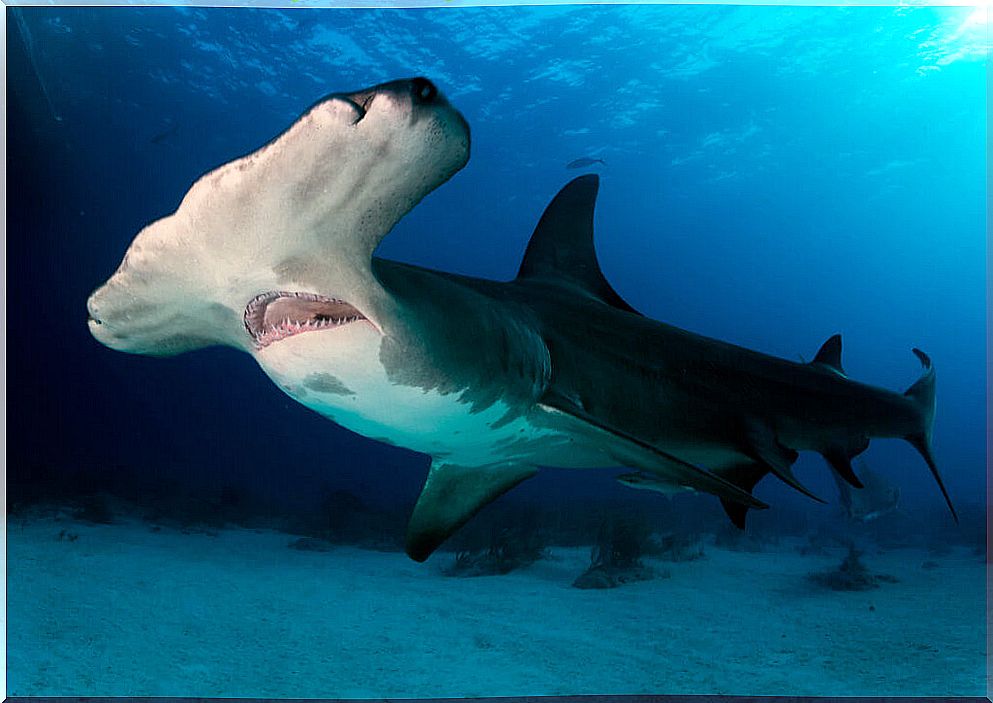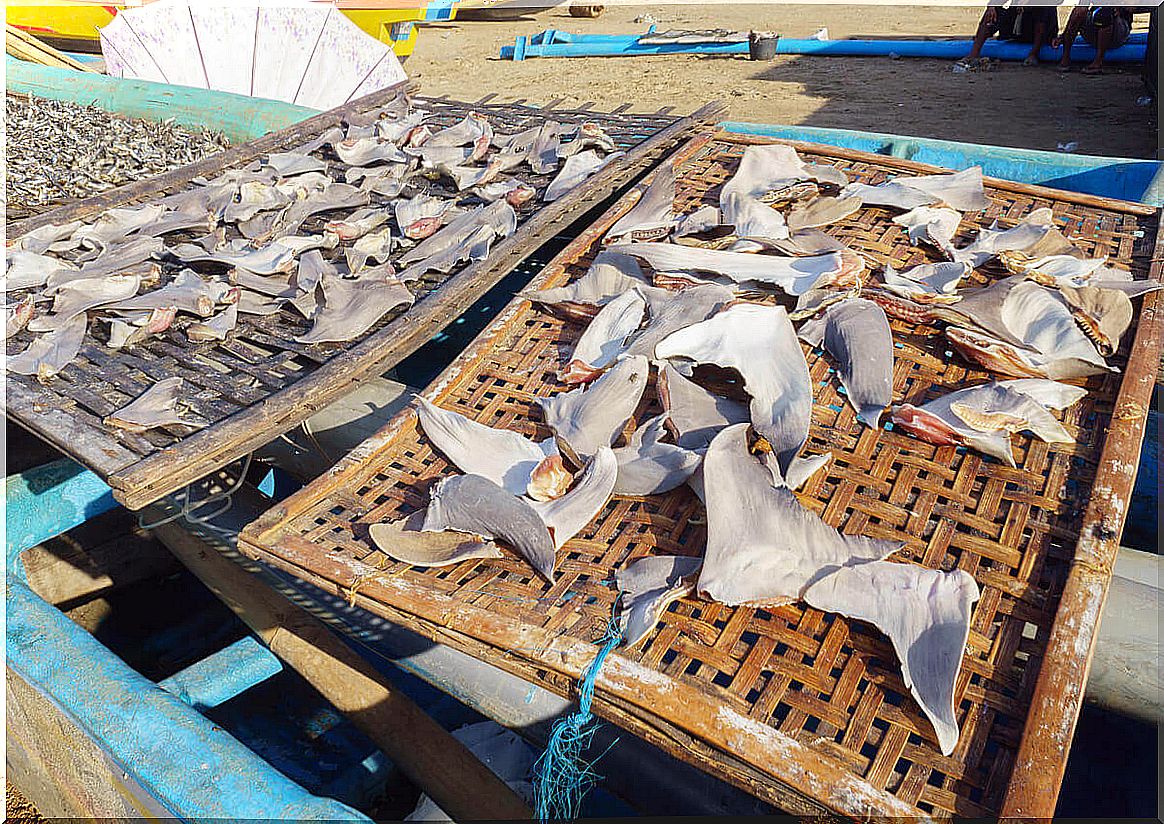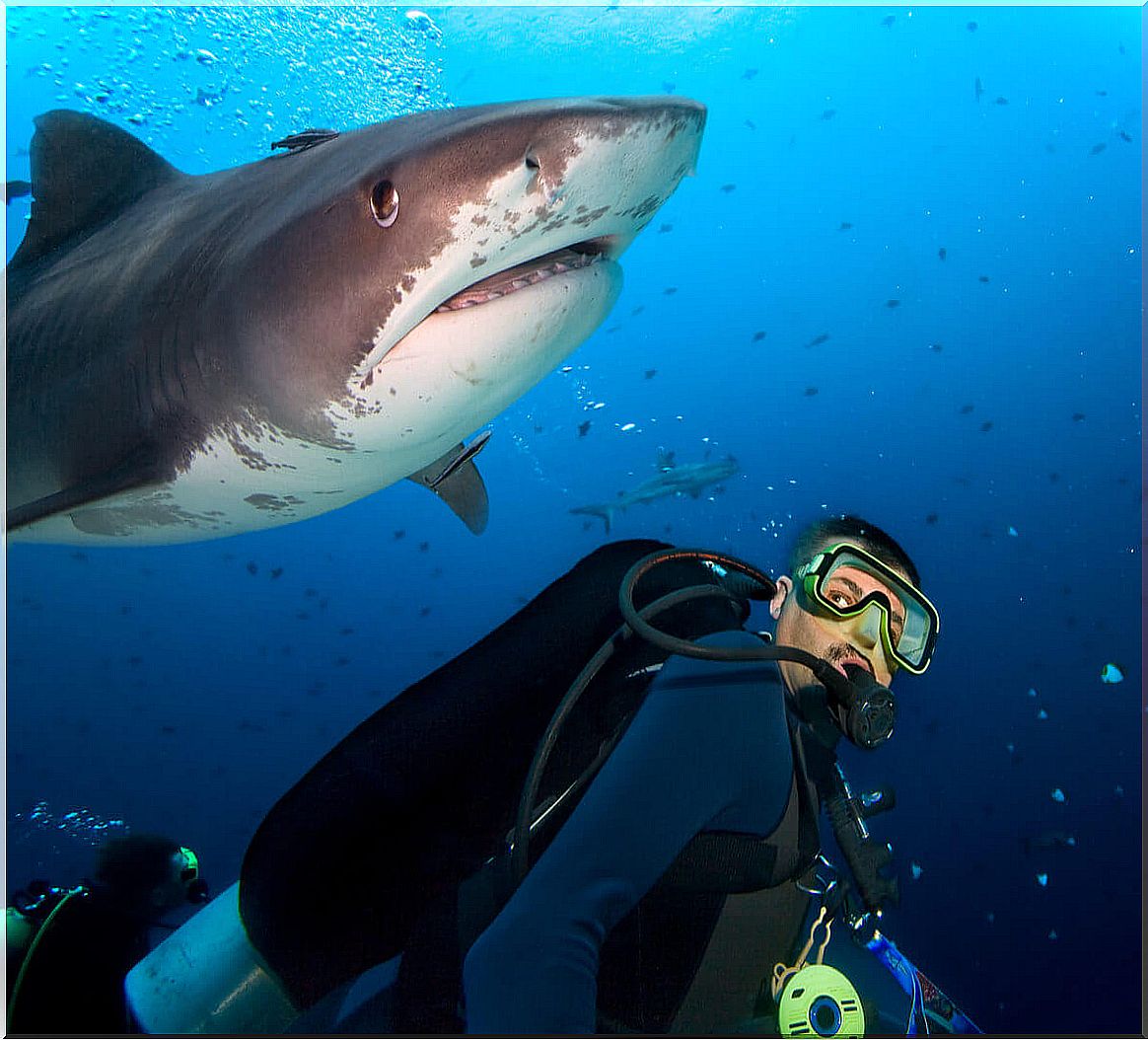More Than 300 Endangered Species Of Sharks And Rays

In December 2020, the International Union for the Conservation of Nature (IUCN) published a report on biodiversity and the current extinction landscape. The data are not encouraging: of the 128 918 species analyzed, more than 35 000 are in danger of extinction.
Even worse is the fact that 31 species have been officially declared extinct in recent times. It’s also impressive to see that certain marine animals – especially sharks and rays – are getting the worst of it. If you want to know why, read on.
The news and the report: endangered sharks and rays
According to the prestigious NBC News portal, the IUCN has estimated that around 300 species of sharks and rays are in danger of extinction. Among them are 4 representatives of hammerhead sharks, 4 species of angel sharks and manta rays ( Mobula birostris) .
According to Andy Cornish, WWF’s Shark and Ray Preservation Representative, “These results were sadly predictable.” As the expert indicates, “20 years have passed since the risk of fishing these animals was recognized internationally, but not enough has been done to eliminate it.”
In addition to these reports, the official document cited above shows the same or even more devastating data. Among them, we find the following:
- Lost shark or lost shark in English ( Carcharhinus obsoletus) , enters the Red List in the “critically endangered (CR).” From a realistic point of view, it is considered practically extinct, as it has not been seen since 1934.
- 17 species of freshwater fish endemic to Lake Lanao in the Philippines are officially considered extinct.
- 3 species of frogs from Central America have recently disappeared. In addition, another 22 species from this region were added to the pre-extinction category.
We could go on listing the data for a while, but it seems to us that the idea is already clear. Deforestation, indiscriminate hunting and climate change – among many other factors – are causing the slow but constant death of the planet. If we keep this up, we will soon reach a point of no return.

Why are so many sharks among the endangered species?
Unfortunately, we have to look again at the human species to answer that question. For example, the World Economic Forum portal shows that the population size of many species of sharks has a clear correlation with their proximity to urban centers and the degree of poverty of their inhabitants.
As lethal as these animals seem to us, we are far more harmful to them than the other way around. Several species of sharks are still hunted because of their fins – with unfounded properties – and their meat. This is even more complicated as these fish are subject to extinction because of their slow growth and low reproductive rate.
The importance of sharks and rays in ecosystems
Despite their unfounded bad reputation, these animals are essential super-predators for the maintenance of the food chain in marine ecosystems. Still, it’s not just about predation. Here are some of the ways in which sharks can benefit marine habitats:
- They neutralize the action of climate change: several species of sharks involuntarily protect forests from algae, preventing certain herbivorous fish from approaching to feed on them. These plants capture atmospheric carbon 35 times faster than terrestrial trees.
- They are marine architects: some species of rays and sharks are excavators, creating microhabitats for many fish and small invertebrates simply by digging in the sand.
- They unintentionally cultivate marine vegetables: certain rays and sharks inhabit the seabed and feed there. When they surface, they bring back biological nutrients – previously lost – through defecation. This is an excellent fertilizer for many algae.
- They are an essential nutrient source: because of their large body mass, dead sharks are an immeasurable source of food for many detritivorous species.
Furthermore, sharks and rays are also of great tourist interest for the more adventurous. When done correctly, ecotourism can promote the preservation of habitats and generate economic benefits for the poorest communities that, without it, would resort to indiscriminate fishing and hunting to survive.

Sharks and rays: endangered species
In summary, sharks are essential for marine life and the maintenance of aquatic ecosystems. We hope that government measures will be increasingly strict to prevent fishing from continuing to harm the populations of these species and, thus, they can return to being the owners of the seas.









